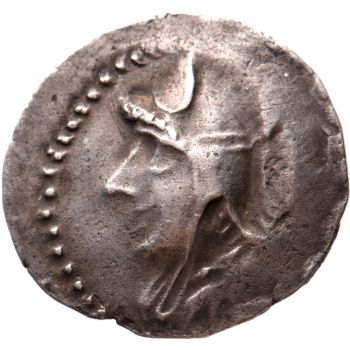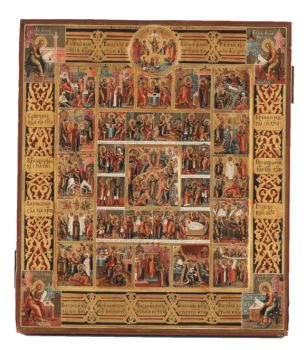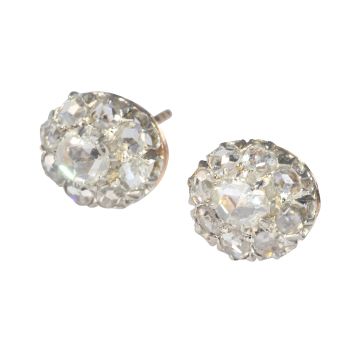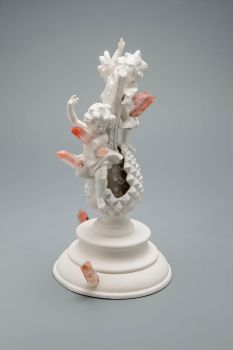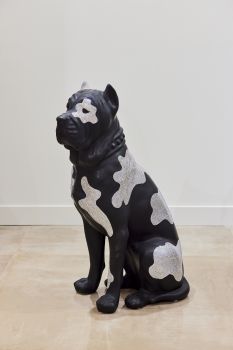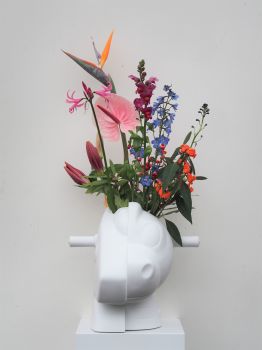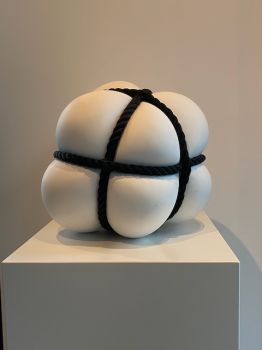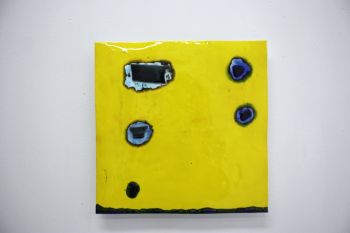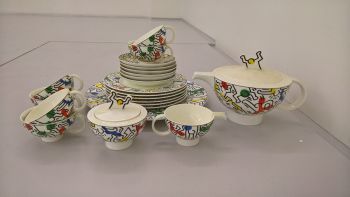Chinese plate after Esaias van de Velde, 18th century Qianlong 1735 - 1796
Artista Desconhecido
Porcelana
38 ⨯ 38 cm
ConditionVery good
€ 1.850
Verkoulen Oriental & European Antiques
- Sobre arteChinese porcelain plate after Esaias van de Velde
A large octangle shaped Chinese Qianlong period (1735-1796) plate with a Western subject after a design from Esaias van de Velde.
18th century, around 1750, Jingdezhen, China. Blue and white
Dimensions: 38,5 x 38 cm.
This rare plate depicts a Dutch landscape with in the middle a river and fishers on a sampan. The seated figure is surrounded by a larger tree, Western buildings, a gatehouse and a typical fence. The plate is a beautiful example of ‘chine de commande’ in the Qianlong period (1735-1796). We know that a Delft tile is used as an example for the design of the plate. This (or a similar tile) was probably brought to China by the Dutch merchants of the Dutch East Indian Company as a sample for new patterns on plates. Meanwhile in China, the Chinese artisans gave their own interpretation to the sample given. Similar plates with the same kind of setup but with pagodas and a Chinese landscape are very common. The Western ‘chine de commande’ subjects were on the other hand usually made on special order because it was more expensive.
The Dutch Delft tile is nowadays located in Castle Twickel in Delden. The design of the tile is directly made after an engraving (etching) of Esaias van de Velde (1587-1630). The engraving where we can see again the landscape with a river and gatehouse has the inscription ‘Hofstede’ and is made between 1613-1617. Beside its unusual shape, the subject with the information of the origin makes it a special item for collectors.
Condition: Good, one minor restoration to the start of a tiny hairline that can only be seen on the back. - Sobre artista
Pode acontecer que um artista ou criador seja desconhecido.
Algumas obras não devem ser determinadas por quem são feitas ou são feitas por (um grupo de) artesãos. Exemplos são estátuas dos tempos antigos, móveis, espelhos ou assinaturas que não são claras ou legíveis, mas também algumas obras não são assinadas.
Além disso, você pode encontrar a seguinte descrição:
•"Atribuído a …." Na opinião deles, provavelmente uma obra do artista, pelo menos em parte
• “Estúdio de…” ou “Oficina de” Em sua opinião um trabalho executado no estúdio ou oficina do artista, possivelmente sob sua supervisão
• "Círculo de ..." Na opinião deles, uma obra da época do artista mostrando sua influência, intimamente associada ao artista, mas não necessariamente seu aluno
•“Estilo de…” ou “Seguidor de…” Na opinião deles, um trabalho executado no estilo do artista, mas não necessariamente por um aluno; pode ser contemporâneo ou quase contemporâneo
• "Maneira de ..." Na opinião deles, uma obra no estilo do artista, mas de data posterior
•"Depois …." Na opinião deles uma cópia (de qualquer data) de uma obra do artista
• “Assinado…”, “Datado…” ou “Inscrito” Na opinião deles, a obra foi assinada/datada/inscrita pelo artista. A adição de um ponto de interrogação indica um elemento de dúvida
• "Com assinatura ….”, “Com data ….”, “Com inscrição ….” ou “Tem assinatura/data/inscrição” na opinião deles a assinatura/data/inscrição foi adicionada por outra pessoa que não o artista
Você está interessado em comprar esta obra de arte?
Artwork details
Related artworks
Artista Desconhecido
UITGEBREIDE FEESTDAGENIKOON MET PASSIECYCLUS19th century
Preço em pedidoHeutink Ikonen
Artista Desconhecido
Conjunto de oito desenhos a guache1799 - 1801
Preço em pedidoRobert Schreuder Antiquair
1 - 4 / 12- 1 - 4 / 11
Artista Desconhecido
The Stamford Raffles Secretaires.1800 - 1813
Preço em pedidoZebregs & Röell - Fine Art - Antiques
Artista Desconhecido
UM MODELO JAPONÊS DE UM NORIMONO, UM PALANQUIM1650 - 1700
Preço em pedidoZebregs & Röell - Fine Art - Antiques
1 - 4 / 24Artista Desconhecido
Uma rara filigrana a taça retortoli1550 - 1600
Preço em pedidoPeter Korf de Gidts - Antiquairs
Artista Desconhecido
The bell of the VOC fortress in Jaffna, Sri Lanka1747
Preço em pedidoZebregs & Röell - Fine Art - Antiques
 Com curadoria de
Com curadoria deDanny Bree
1 - 4 / 24Samuel Dejong
Anatomia Blue Heritage, Atlas Closed2017 - 2019
Preço em pedidoVilla del Arte Galleries
1 - 4 / 24- 1 - 4 / 5







